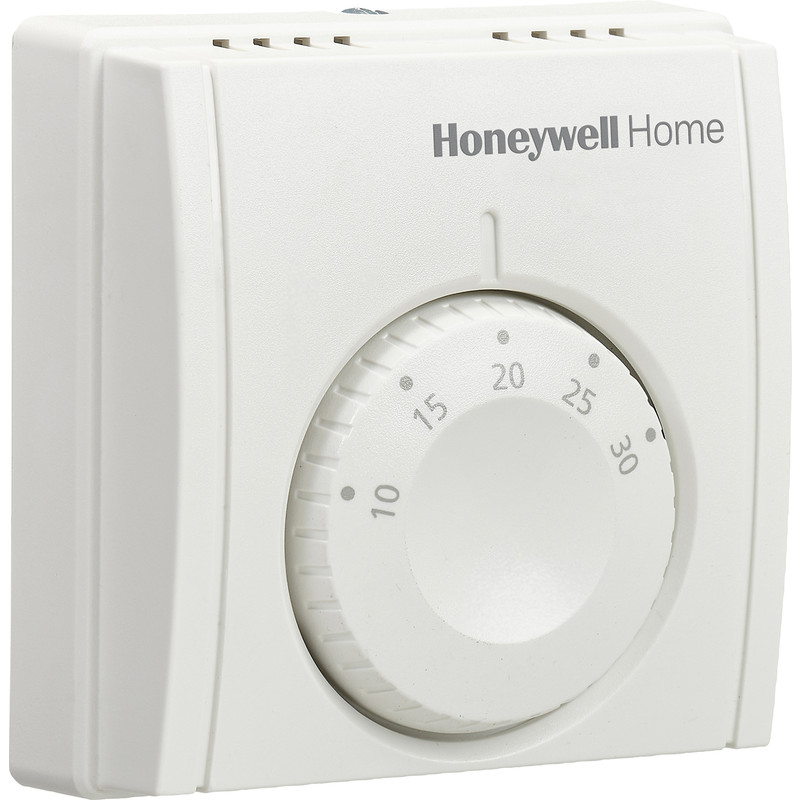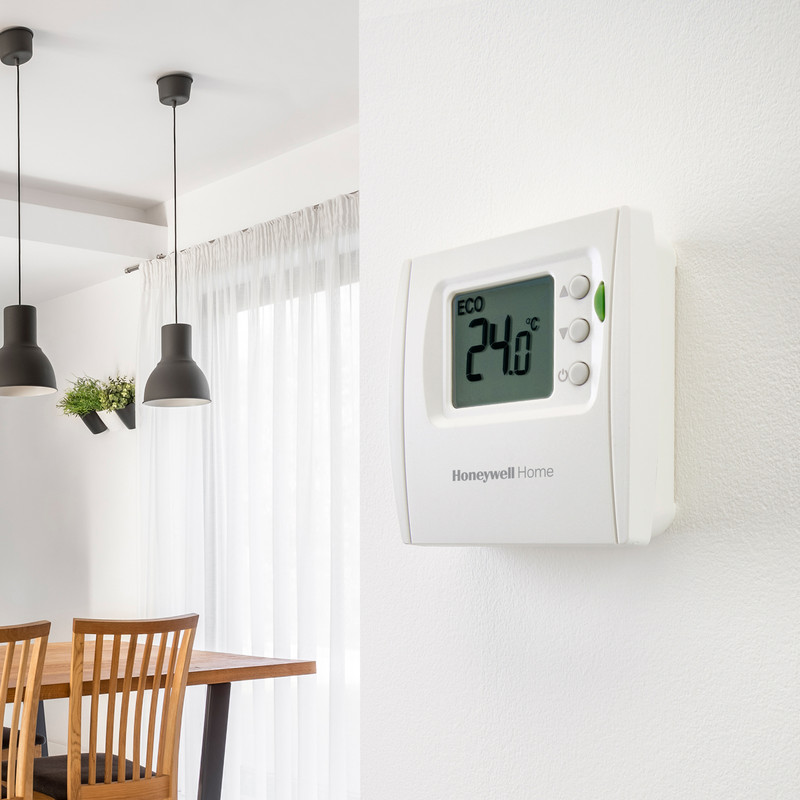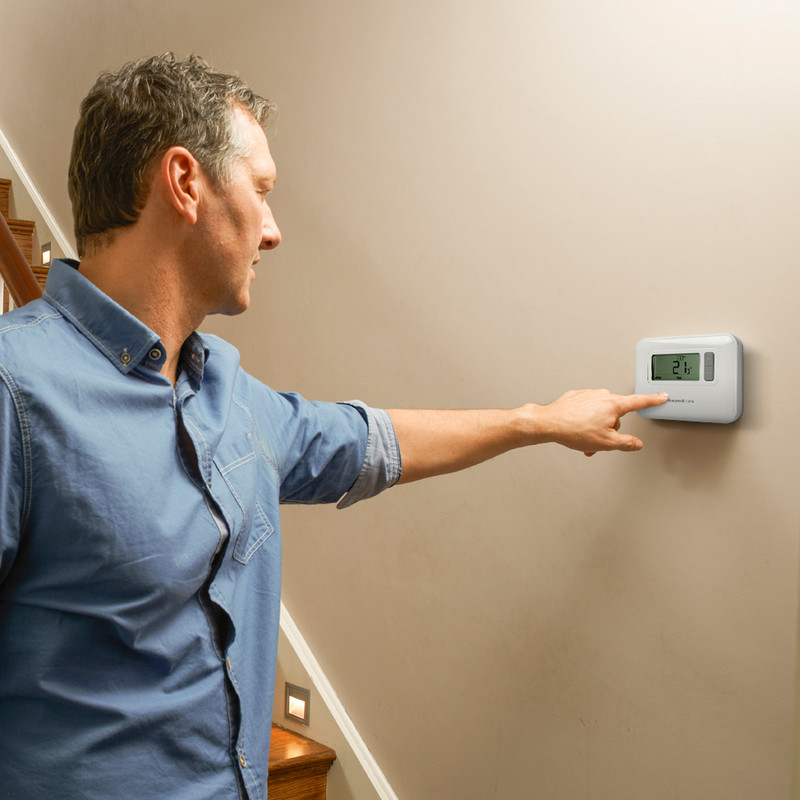Thermostats are used to control the heating in buildings. They are an integral part of the heating system and work by sending messages to the boiler about a room’s temperature by using a sensor inside the device. If the temperature of the room goes below the setting on the thermostat, the boiler is fired up.
There are a number of different thermostat types available at a range of price points, from analog thermostats which are permanently set to the desired temperature, to smart thermostats which can learn from your room and even detect when there is nobody home to use energy more efficiently.
Features such as frost protection, holiday mode and 5/7 day programming give you more control when it comes to heating and cooling your home. Your thermostat choice will depend on a number of factors, such as your budget, the number of rooms that need heating, and your daily routine.
Types of Thermostats

Smart Thermostat
Smart thermostats are a modern invention that give you the flexibility to improve the energy efficiency of your home. Like other thermostats, a sensor keeps a note of the temperature which is communicated to the boiler. However, smart thermostats can be controlled from your smartphone, tablet or computer from anywhere in the world. Connecting your smart thermostat with smart radiator valves (smart TRVs) allow you to control the temperature of different rooms.
As smart thermostats can be controlled from your smart devices, you have full control of your heating while at work or even on holiday! Some smart thermostats can detect when the home is empty, so will turn the heating off, while others use AI to learn from your routines so it times turning the heating on and off for when you come and go.
The main consideration with smart thermostats is that the energy efficiency can differ depending on your routines. If you stick to the same routine every day then a digital thermostat with 5 or 7 day programmable settings can offer a lot of the same benefits.
Advantages
-
Can be controlled from anywhere in the world.
-
Energy efficient heating
-
Some models learn from your daily routines
Things to Consider
-
Energy savings differ from home-to-home
-
Extra components can add to the cost
-
Higher purchase price

Digital Thermostat
Digital thermostats have a display for temperature and settings. They work like any other thermostat, but are programmable so you can control the heating at different times of the day. Some digital thermostats connect to your boiler via WiFi, while others connect using Bluetooth or radio signals. Many digital thermostats have a panel that conceals buttons to control the heating routines and temperature.
You’ll find digital thermostats are modern, easy to control, and come with a number of features which can improve your energy efficiency. For example, holiday mode means you can keep the central heating off while away, but set it to come back on when you’re due to be home.
Digital thermostats can only be controlled from the unit itself, rather than when away from home or in another room – if you’re looking for more control, a smart thermostat may be better. You’ll also find that they are less flexible than smart thermostats, as they’ll always stick to the pre-set heating schedule. For those less with little tech know-how, a digital thermostat may get confusing as there are lots of settings that can be changed.
Advantages
-
Modern
-
Easy to control
-
Lots of features
Things to Consider
-
Less control and flexibility than smart thermostats
-
Settings could be confusing for people with little tech knowledge

Analogue Thermostat
Analogue thermostats are the most traditional type of heating controls you’ll find at Toolstation. They have a simple, easy-to-use design and are controlled by turning a dial to the desired temperature in celsius. They are usually wired directly to the boiler so there is no need to set them up with WiFi or Bluetooth.
These thermostats are ideal for those needing a very simple way to control the heating – such as for the elderly. There are no confusing settings and can be turned on and off with ease.
Analogue thermostats, because of their simple, stripped back design, do not have any energy-saving features such as ‘holiday mode’ or programmable heating schedules. As a result, homes with analogue thermostats may not use heating as efficiently. The design of analogue thermostats is also relatively dated, so may not suit very modern homes.
Advantages
-
Very easy to control temperature
-
No confusing settings
Things to Consider
-
No energy saving features
-
No programmable heating schedules
-
Design is not as modern as alternatives
Key Thermostat Features
5/2 or 7 Day Programmable
Digital and smart thermostats are programmable, which are usually either 5/2 day or 7 day programmable. 5/2 day programmable thermostats offer a separate heating routine for weekdays and the weekend. With a 7 day programmable thermostats, every day can be set differently – perfect if your routines change from day-to-day.
Wired vs. Wireless
Wired thermostats are connected directly to the boiler with cables, while wireless thermostats use WiFi, Bluetooth or radio signals to send messages to the boiler. Wired thermostats tend to come at a lower cost but often need to be installed by a professional. Wireless thermostats, namely smart thermostats, are easier to install but come with a higher price tag.
Frost Protection
During cold spells, pipes are at risk of freezing which could cause them to burst and leak. Most thermostats have frost protection settings, which means the central heating turns on if your home gets too cold.
Holiday Mode
Digital and smart thermostats have a number of features which can make them more energy efficient, such as ‘holiday mode’. This allows you to temporarily turn the heating off for a set amount of time. By setting ‘holiday mode’ to end shortly before you arrive home, you won't have to wait for your central heating to kick back into gear – but you’ll have saved plenty of energy while away. ‘Holiday mode’ also keeps your pipes protected from frost if it gets cold.








